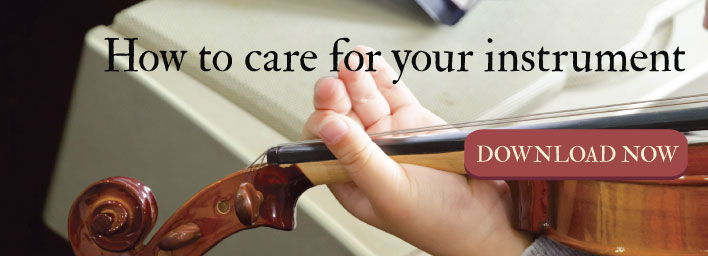How to Choose a Violin Case

A violin case is a must – so let go of any idea that cases are optional. The fragility of string instruments, particularly violins and violas, requires an extra layer of protection whenever the instrument isn’t in use.
The case shields your violin from the bumps and dings of general movement in daily life. It protects the violin body from cracking or breaking if the case is knocked or tripped over, and blocks the finish and underlying wood from direct contact with sunlight or moisture. And, with the addition of a Boveda 2-Way Humidity Control Kit or similar accessory, the case also maintains your instrument at “just-right” humidity levels.
Now that you know how essential a violin case is to the health, durability, and longevity of your violin – let’s review things to consider when choosing the right case for you or your favorite string student.
Match the case to the user’s activity level
Is your child rambunctious, involved in sports or other extra-curricular activities that places the violin at risk for being knocked, bumped, jostled, or left outside under the eaves? If so, they need a violin case that boasts top-notch durability and weather resistance. A hard case may be your only option if you have a kid who’s naturally hard on things.
On the other hand, if the violin spends most of its time in a particular location in the home and then in a car on the way to violin class, a soft, but still durable case is typically sufficient. Just know you may need to upgrade as your child’s life – or evolution into a higher-level violin – requires additional protection.
It fits everything you need
A quality violin case has a designated and secure spot for everything a violinist needs.
- Secure space for the violin. There is a recessed cavity – lined with a soft material – that fits the violin. It should also have at least one soft strap that anchors the violin in place, typically located somewhere between the saddle and neck-end of the violin. When the violin is tucked in, it should be secure – no sliding around.
- Room for the bow(s). Most violin cases have room for at least two bows (sometimes as many as four). Once the bow hair is loosened, and the bow is put in its designated spot (often located in the lid of the case), “bow spinners” twist from horizontal-to-vertical to secure the bow(s) in place.
- A closeable niche for accessories. There also needs to be a closeable compartment to house your violin accessories such as a soft cleaning rag, rosin, tuner, etc. Be sure the compartment closes securely.
Young students benefit from a pocket or compartment to house sheet music, notes from a teacher, a recommended practice schedule, a list of techniques to work on, etc., so important papers aren’t lost in the daily shuffle.
Portability is essential
After a secure storage compartment, the violin case’s primary job is to transport the instrument safely from Point A to Point B. This means it needs to be comfortably portable. Fortunately, violin cases don’t tend to be heavy, but total weight is a factor.
It is also nice to have carrying options – such as an easy-grip-handle to hold the case like a briefcase, an across-the-shoulder strap, or backpack-style strap options. This gives students the ability to alter how they carry the instrument so it is never uncomfortable or cumbersome.
Additional, customized protection
There are other things to consider based on where you live – or where the instrument will be living or traveling from day-to-day (or house-to-house).
- Weather. Is your climate wet or cold for decent portions of the year? If so, invest a bit more and look for a violin case that is completely waterproof and/or insulated.
- Suspension. Just like your car’s shocks, higher-end cases offer suspension, which means the violin is held in a hammock of sorts, never touching the front or back – exponentially increasing shock absorption.
The good news is that violin cases span the budget gamut, and parents or students can purchase a decent case for affordable prices. Lower-end but suitable cases range from $45.00 to $100. Mid-range (more protection and customization) cases are in the $200 - $400 bracket, and ultra-high-end cases cost upwards of $1000.
We recommend visiting Revelle’s website, where you can find high-quality violin cases specifically designed to protect student violins (cases that can take a beating, like their CrossTECH case) at budget-conscious prices.
Don’t let your violin spend another day in a dilapidated – or non-existent – case. Begin researching the options, and give your instrument the durable protection, and comfortable portability, you both deserve.


